Previous Next
Flat wheelbarrow tires happen all the time, and that’s too bad because they handle a lot of heavy lifting and save our backs from doing the same.
Whether you’re hauling fertilizer for your garden, mulch for your landscaping, or stone for your next backyard DIY project, you need to be able to count on your one (or two) wheel wonder to get the job done, so what’s the best way to ensure your wheelbarrow tires keep rolling all year?
You’ve got a couple of options, but fair warning: Some are better than others.
A quick internet search will reveal you’ve got a couple choices when it comes to solving the flat wheelbarrow tire dilemma. We’ll go over the different options for your wheelbarrow and weigh the pros and cons of each.
If you’ve got a wheelbarrow that uses innertubes, you can always just opt to replace the failed innertube with a new one.
Innertubes are a fairly inexpensive fix, but they also require you to remove the wheel, tire, and tube yourself, and then install a new tube and remount the tire onto the wheel.
There are a few obvious downsides to the innertube approach for wheelbarrow tires.
First, replacing an innertube is a hassle.
Pulling off the wheel, using specialty tools to pry off the tire, finding the right size replacement tube, and then remounting and reinstalling everything is a chore.
It takes a considerable amount of time and effort, and even the best innertube money can buy will only protect you until the next thorn or nail you run over forces you to have to do it all over again.
Stan’s Sealant was originally developed for tubeless applications, but it works great with innertubes as well.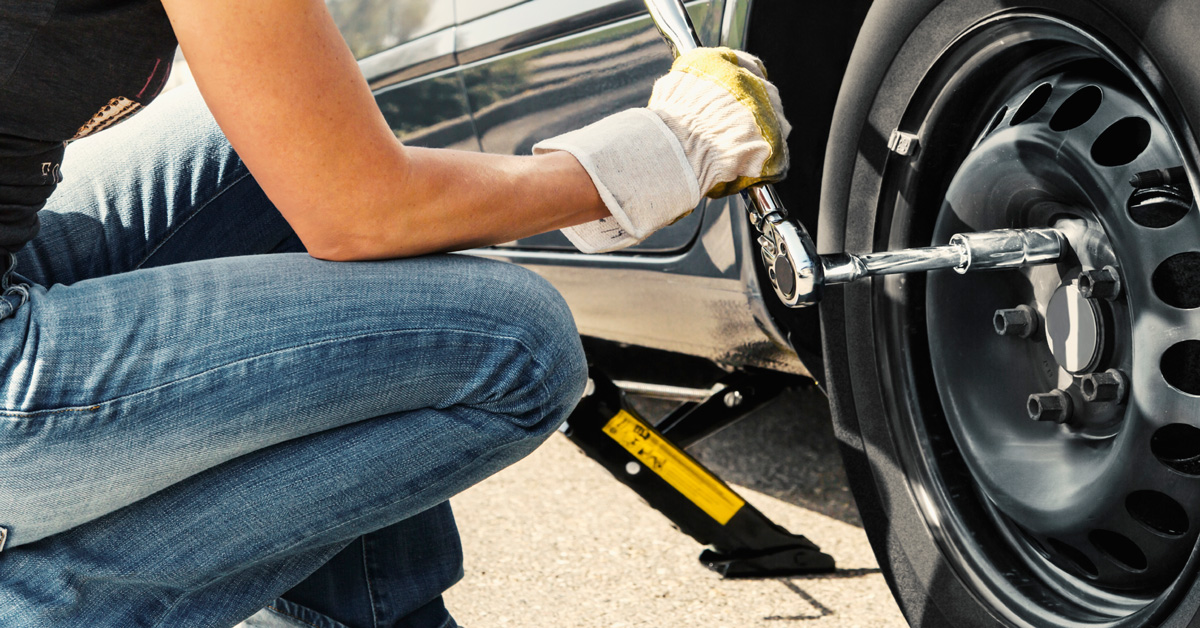 So whether you want to get proactive and prevent flats in your current tube or just don’t want the hassle of replacing one that’s already gone flat, our sealant works to repair and protect tires with innertubes from punctures and leaks of all kinds.
So whether you want to get proactive and prevent flats in your current tube or just don’t want the hassle of replacing one that’s already gone flat, our sealant works to repair and protect tires with innertubes from punctures and leaks of all kinds.
Your next option to remedy a flat wheelbarrow tire is to replace your pneumatic tire with a rigid tire, also called a “flat-free” tire.
Rigid tires are wheels that are manufactured with inflexible solid tires permanently affixed to them. These “tires” are made using either solid rubber or super-dense foam, so there’s no need to inflate them, and they cannot be damaged by punctures from sharp objects.
There’s a downside to rigid tires however, and it’s hiding right there in the name.
These tires are RIGID. Almost entirely inflexible.
So while they’ll give you extended periods of flat-proof use, they make for a very hard rolling tire, and will bounce, jump, and hop over every little rock or bump in the ground you’re pushing them over.
This constant jarring is a huge pain in the neck (and arms… and shoulders…) after a few short trips, and can upset and tip your load at anything over a snail’s pace.
If you’re reading this, chances are you’ve seen the videos online of wheelbarrow owners making their own rigid tires using spray foam.
Our advice here is definitely to just skip this option for two reasons.
First, you’ll be creating all the same problems of a rigid tire, but won’t get nearly as many miles out of a “foamed” tire before it starts to fail and needs to be either replaced or foamed again.
Second, adding foam to a wheelbarrow tire makes a huge mess. Most DIY’ers who try this method end up drilling several holes in the sides of their tire to dump foam into, which then expands out and creates a huge mess on the tire and rim.
We’ve also seen some folks attempt to apply foam to a tire through the valve stem the same way you’d apply our sealant.
This method is a little less messy, but can only be done once, and isn’t likely to get enough foam into the tire to evenly support a load.
Seriously, just skip it.
Many wheelbarrows nowadays use tubeless tires, which form a seal using air pressure at the bead of the tire along the rim rather than depending on an innertube (or no air at all).
Tubeless tires are great. They really are the best of both worlds for their simplicity of use and great ride quality. In fact they seem to be the perfect wheelbarrow tire right up until they get a puncture or start losing their seal and have to be repaired or replaced.
And that is where tire sealant comes into play.
Whether you’ve already got a tubeless tire that doesn’t want to hold air, are currently running tubes but want to make the switch to tubeless, or are tired of pushing around a harsh rigid tire setup, switching to a tubeless tire with Stan’s Sealant inside will give you all the best features you want in a wheelbarrow tire.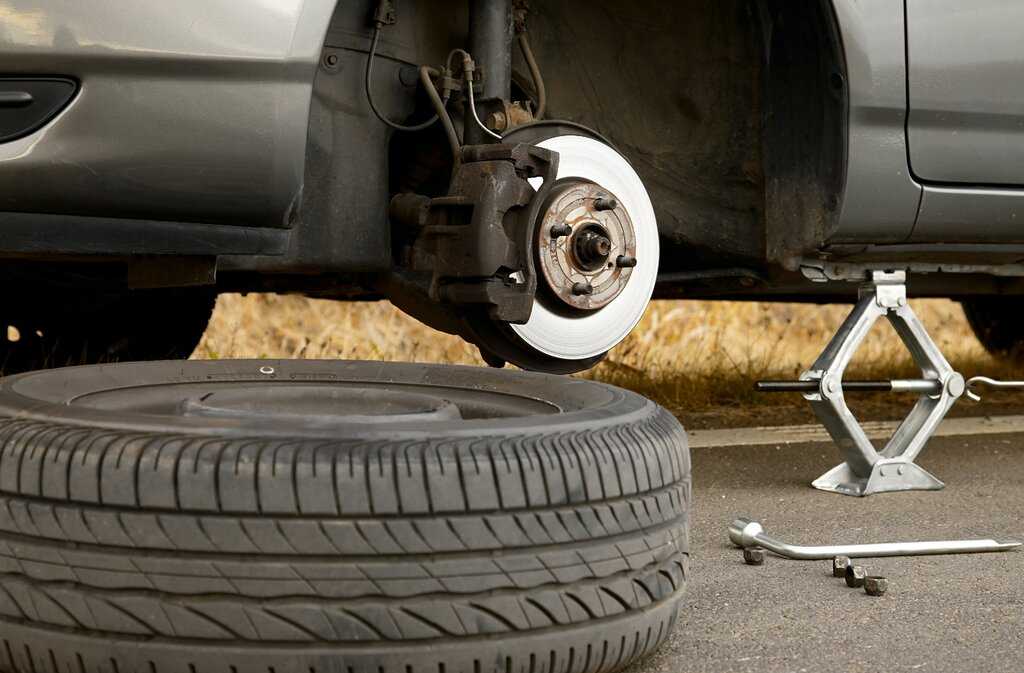
Our sealant is easy to use, makes zero mess thanks to our handy threaded applicator, and will eliminate virtually all flat tires in your wheelbarrow for up to two years straight with a single application.
What’s even better is that tubeless wheelbarrow tires treated with Stan’s Sealant will go on protecting your wheelbarrow from future punctures as well for the life of the tire with proper seasonal top-offs.
Stan’s Sealant is the one-size-fits-all solution for 99% of flats, and what’s even better, Stan’s isn’t just for your wheelbarrow.
The same Stan’s Sealant that keeps your wheelbarrow rolling season after season works in just about every other piece of equipment in your shed. Add Stans to your lawn mower, ATV, UTV, side-by-side, golf cart, hand truck, or tractor to get the same quality protection in all of your utility equipment, all season long.
Here at Stan’s, we make the best tire sealant in the world, and every bottle we make is produced right here in the USA at our facility in Big Flats, NY (ironic, we know).
If you want the best sealant on the market, specially formulated for the hard work you and your equipment need to get done, look no further. But don’t wait for a flat tire to happen to put Stan’s Sealant to work for you.
Stan’s Sealant is formulated for whatever lies ahead, so get proactive about your tire protection today. Pick up a bottle or two today in convenient 16 ounce and 32 ounce sizes and know that a flat tire will never come between you a job well done again.
New to tire sealant? Check out our handy guide to become a sealant pro in less than five minutes!
Page load linkGo to Top
A flat wheelbarrow tire, or a tire with a slow leak can be frustrating. Rather than taking the time to assess the damage and root cause of the problem, we sometimes just opt for the costly solution of replacing the tire, replacing the entire tire and wheel assembly, or even tossing out the wheelbarrow. It is not uncommon to see discarded wheelbarrows at dumps and waste yards that could have been easily returned to service with a minor wheelbarrow tire repair or tube replacement. Flat wheelbarrow tire repair or buying and installing a new tire, is an easy, money saving DIY project that anyone can do at home.
It is not uncommon to see discarded wheelbarrows at dumps and waste yards that could have been easily returned to service with a minor wheelbarrow tire repair or tube replacement. Flat wheelbarrow tire repair or buying and installing a new tire, is an easy, money saving DIY project that anyone can do at home.
All that is needed to remove and replace the tire from the wheel is a large flathead screw-driver and a hand tire pump. You will also need a wrench to remove the wheel and tire assemble from the wheelbarrow. This is easily done by loosening one or both of the brackets holding the axle to the wheel. If you have a tubeless tire which a puncture in the tread area of the tire, you will need a plug repair tool instead of the flathead screwdriver.
1. Once the flat wheelbarrow tire is off the wheelbarrow, you can conduct a thorough visual inspection. First, inspect the wheel for damage and the tire for obvious sources of the leak. You also want to check the amount of wear on the tread rubber and the amount of cracks in the tire due to dry rot. If the tire is badly rotted with deep cracks in the side of the tire, or the tread is worn and not providing sufficient traction, you should consider buying a replacement tire. A wheelbarrow tire could cost between 15 and 40 dollars delivered right to your door, compared to the $150 or more for a new wheelbarrow. If the wheelbarrow itself is in good condition, a new tire can make it work like new.
You also want to check the amount of wear on the tread rubber and the amount of cracks in the tire due to dry rot. If the tire is badly rotted with deep cracks in the side of the tire, or the tread is worn and not providing sufficient traction, you should consider buying a replacement tire. A wheelbarrow tire could cost between 15 and 40 dollars delivered right to your door, compared to the $150 or more for a new wheelbarrow. If the wheelbarrow itself is in good condition, a new tire can make it work like new.
2. If the source of the leak is not easily identifiable on a tubeless tire (like a hole or object stuck in the tread), you need to inflate the tire to find the source of the leak. If the tire is entirely flat and won’t easily seat against the wheel flange, you can tighten a rope around the outside of the tire to push the tubeless tire against the wheel and get a good seal. If the wheel itself is severely bent, then you may need a new wheel, however small dents in the wheel flange usually don’t cause any problem, particularly for tube type tires. Adding
Adding
a tube to a tubeless tire and wheel assemble is a cheaper alternative to buying a new wheel even if it is damaged and leaking air between the wheel and tire itself.
3. For a tube type tire, the tire must be removed from the rim. Use the flathead screwdriver to pry the tire off the rim as shown in this video. Once one part of the tire is over the wheel frange, one side of the tire will easily twist off the wheel. Turn the wheel over, and repeat for the other side of the tire. Be careful not to pinch the tube between the screwdriver and the wheel flange. A tubeless tire can often be repaired by leaving the tire on the wheel and using a plug. It is much easier to repair a hole in a tubeless tire but it does take some specialized equipment. Here is a video on how to plug a tubeless tire. Once the tire is plugged and the plug is trimmed, the tire and wheel is ready to be installed back onto the wheelbarrow.
4. Once the tube is removed, it can be inflated and submerged in a bucket of water to find the source of the leak.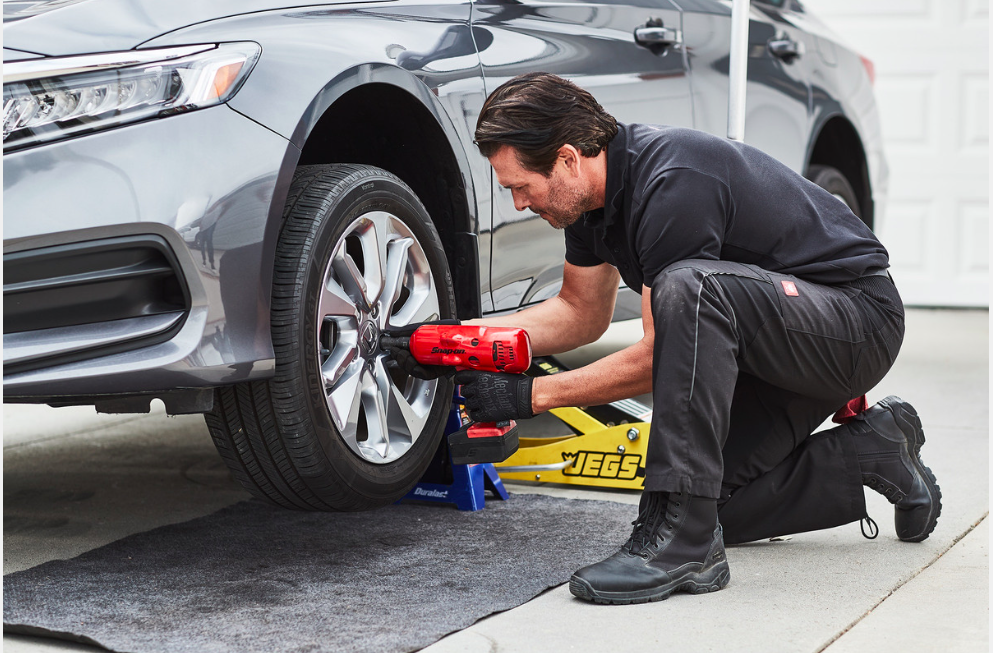 The bubbles will identify even pin pricks from thorns or otherwise hard to see damage. The area around the hole should be roughened up using fine grit sandpaper or a wood file. Coat the area to be repaired with rubber cement and apply the patch. If the tube cannot be repaired, and the tire is still in good condition, consider buying a replacement tube. A wheelbarrow tube will cost under $10, so a fraction of the cost of a new wheelbarrow or even a new tire and wheel.
The bubbles will identify even pin pricks from thorns or otherwise hard to see damage. The area around the hole should be roughened up using fine grit sandpaper or a wood file. Coat the area to be repaired with rubber cement and apply the patch. If the tube cannot be repaired, and the tire is still in good condition, consider buying a replacement tube. A wheelbarrow tube will cost under $10, so a fraction of the cost of a new wheelbarrow or even a new tire and wheel.
5. Once the tube repair has fully cured, it is time to install the tire and tube back on the wheel. First, insert the deflated tube in the tire, and reposition one side of the tire back in the wheel. At this point, for a tube type tire, you will need to position the tube valve in the wheel hole. Once aligned, the other half of the tire can be pried on to the tire.
6. The tire or tube is now ready to be inflated to the psi suggested on the side of the tire. Replace the axle and fasten the entire wheel and tire assemble to the wheelbarrow.
If your flat wheelbarrow tire or tube is too damaged or worn to be repaired, then tires-easy.com is your best option for inexpensive wheelbarrow tires. They have a large variety of wheelbarrow tires at low prices. Armed with the tire size you need, you can easily find your replacement tire, with fast and convenient ordering and shipping direct to your home.
Published: July 13, 2018 2:54 PM
A flat wheelbarrow tire or tires with slow air leakage can be frustrating. Instead of spending time assessing the damage and the root cause of the problem, we sometimes just opt for the costly solution of changing a tire or even throwing the car away. It is not uncommon to see abandoned cars in landfills and waste sites that could easily be returned to service with a minor tire repair or tube replacement. Repairing a flat tire on a wheelbarrow or buying and installing a new tire is an easy way that saves money, because everyone can do this on their own at home.
All you need to remove and replace a tire from a wheel is a large flathead screwdriver and a hand pump. You will also need a key to remove the wheel and tire from the car. This is easily done by loosening one or both of the brackets holding the axle to the wheel. If you have a tubeless tire that is punctured in the tread area of the tire, you will need a repair tool instead of a flathead screwdriver.
As soon as the wheelbarrow tire is flat, you can carry out a thorough visual inspection. First, check the wheel for damage and the tires for obvious sources of leakage. You can also check the wear level of the tread rubber and the number of cracks in the tire due to dry rot. If the tire is badly rotted and has deep cracks, the tread side is worn and doesn't provide enough traction, you should consider purchasing a replacement tire. A wheelbarrow tire can cost anywhere from $15 to $40.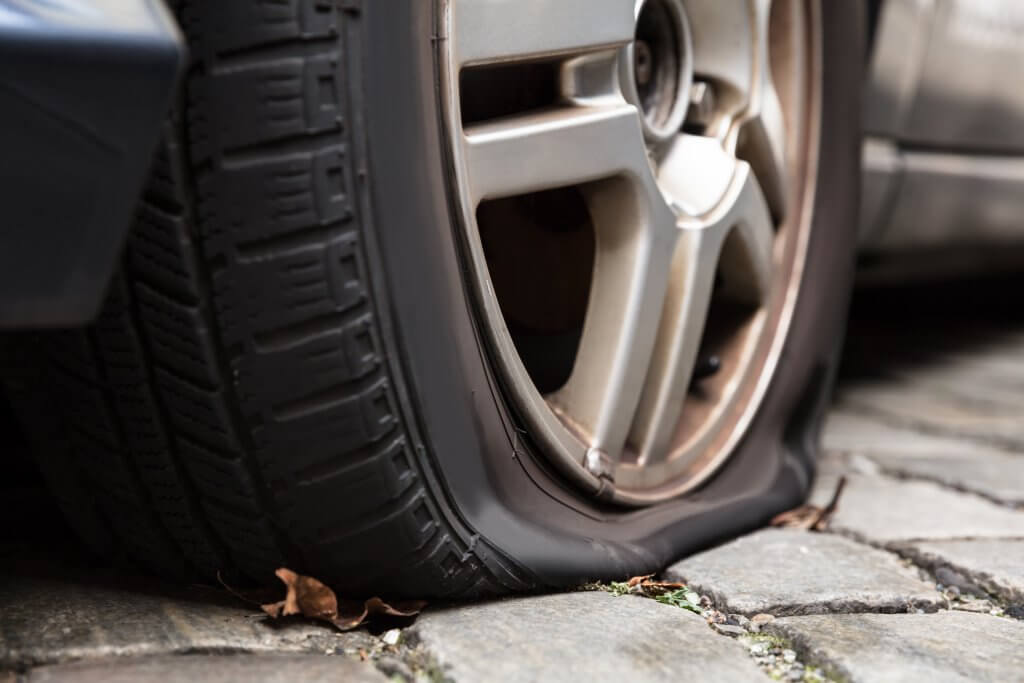 Products will be delivered right to your door, but a new car will cost about $150 or more. If the car itself is in good condition, a new tire can make it perform even better.
Products will be delivered right to your door, but a new car will cost about $150 or more. If the car itself is in good condition, a new tire can make it perform even better.
If the source of the leak is not easily identified on a tubeless tire (for example, there is a hole or an object stuck in the tread), you need to inflate the tire to determine this. If the tire is completely flat and you can't easily get to the wheel flange, you can tighten the rope around the outside of the tire. This will help press the tubeless tire against the wheel and get a good seal. If the wheel itself is severely bent, you may need a new one, however, small dents in the wheel flange are usually not a problem, especially with tubular tires. Adding tubing to a tubeless tire and wheel assembly is a cheaper alternative to buying a new wheel even if it is damaged and leaks air between the wheel and the tire itself.
The tubular type tire must be removed from the rim. Use a flathead screwdriver to pry the tire off the rim as shown in this video.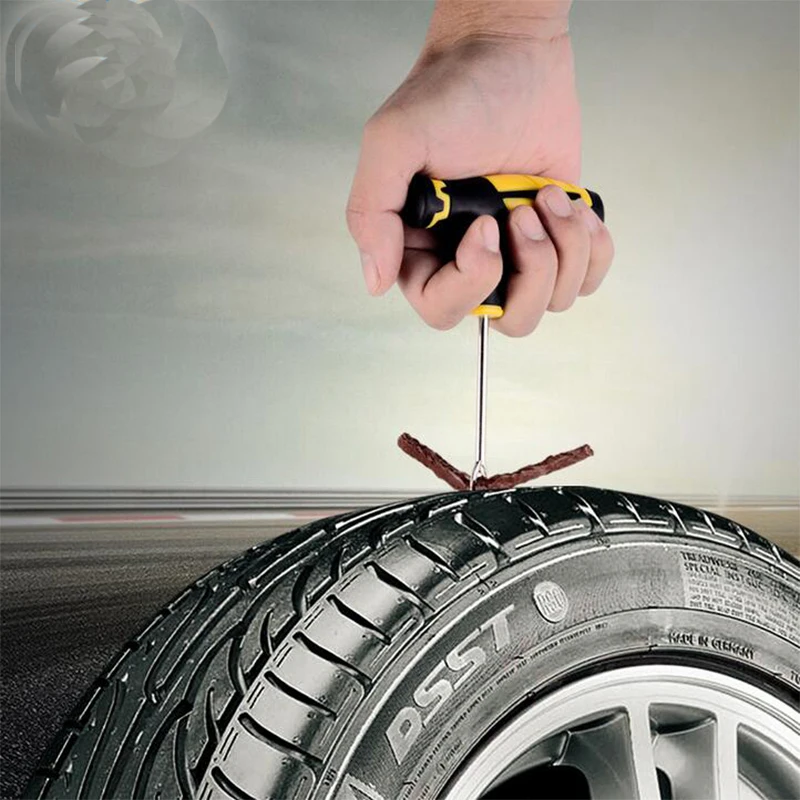 As soon as one part of the tire is above the wheel flange, the other side of the tire will easily unscrew. Turn the wheel and repeat for the other side of the tire. Be careful not to pinch the tube between the screwdriver and the wheel flange. A tubeless tire can often be repaired by leaving the tire on the wheel and using a plug. It is much easier to repair a hole in a tubeless tire, but it does require some specialized equipment. Here is a video on how to connect a tubeless tire. Once the tire is in and the fork is cut off, the tire and wheel are ready to be put back on the wheelbarrow.
As soon as one part of the tire is above the wheel flange, the other side of the tire will easily unscrew. Turn the wheel and repeat for the other side of the tire. Be careful not to pinch the tube between the screwdriver and the wheel flange. A tubeless tire can often be repaired by leaving the tire on the wheel and using a plug. It is much easier to repair a hole in a tubeless tire, but it does require some specialized equipment. Here is a video on how to connect a tubeless tire. Once the tire is in and the fork is cut off, the tire and wheel are ready to be put back on the wheelbarrow.
Once the tube is removed, it can be inflated and placed in a bucket of water to find the source of the leak. Bubbles will identify even minor spike damage, which will be more difficult in other cases. The area around the hole should be reinforced with fine sandpaper or wood. Coat the area to be repaired with rubber cement and attach the patch. If the tube cannot be repaired and the tire is still in good condition, consider purchasing a replacement tube. It will cost less than $10, which is not comparable to the cost of a new car or even a new tire and wheel.
It will cost less than $10, which is not comparable to the cost of a new car or even a new tire and wheel.
Once the repaired tube is fully cured, it's time to put the tire and tube back on the wheel. First, insert the deflated tube into the tire and reinstall one side of the tire back into the wheel. At this point, for a tubular type tyre, you will need to install a tubular valve in the wheel bore. After alignment, you can put on the second side.
The tire or pipe is now ready for inflation. Change the axle and attach the entire wheel and tire to the wheelbarrow.
If your flat tire or wheelbarrow tubular is too damaged or worn out, then Shiny-Online.by is the best option for buying inexpensive wheelbarrow tires. Here is a wide range of tires for wheelbarrows at low prices. Knowing the right tire size, you can easily find a replacement tire by making a quick and convenient order with door-to-door delivery.
Reifen
Contents:
Every gardener and summer resident constantly needs to transport cargo across the territory of the plot or garden. The need to transport fertilizers for feeding plants or building materials can arise at any time, so the purchase of a garden wheelbarrow is often required. Devices for transporting goods over short distances differ in many parameters: size, number of rollers, tire material, etc.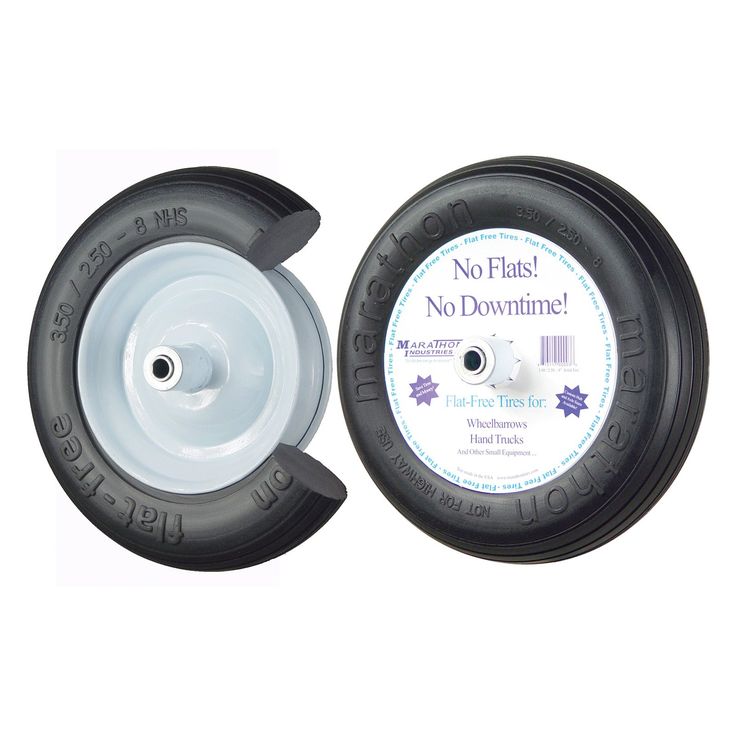 And you need to pay attention to all this when choosing a wheelbarrow in a store.
And you need to pay attention to all this when choosing a wheelbarrow in a store.
The wheelbarrow for a garden wheelbarrow can be pneumatic (with a tire into which air is pumped), on molded rubber and polyurethane. At the same time, the material of the disk is not so important, since it is the tire that is subjected to the maximum load during operation.
Wheelbarrow wheel
The rim for pneumatic wheels is based on a treaded tire. Inside, there is usually a chamber, which, for reliability, is made using two layers of rubber. Discs can be made of metal or polypropylene. If the manufacturer provides a bearing at the fixing point, then the trolley will move more smoothly.
Advantages:
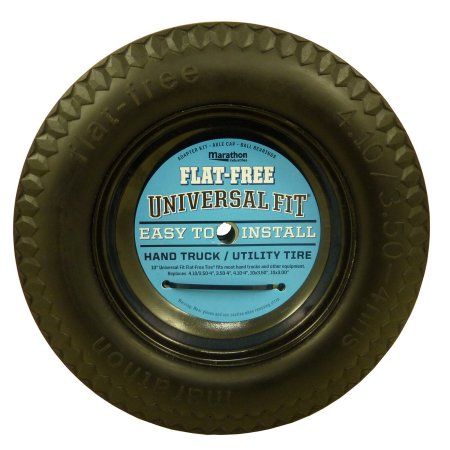 With large wheels, you can move the trolley even on very uneven surfaces.
With large wheels, you can move the trolley even on very uneven surfaces. Pneumatic wheel
Garden cart wheels with solid rubber are made of high quality materials. The disc is made from cast steel. Additionally, galvanizing is carried out, for reliability and protection against metal corrosion. Thanks to this, high reliability of the design, strength and durability are achieved, in addition, the design features of the connection allow you to quickly change the wheel.
Minus - sufficiently low load limit. It is impossible to load such a trolley with a mass exceeding 200 kg. In addition, when driving there is a slight shaking, so these carts are not suitable for transporting fragile goods.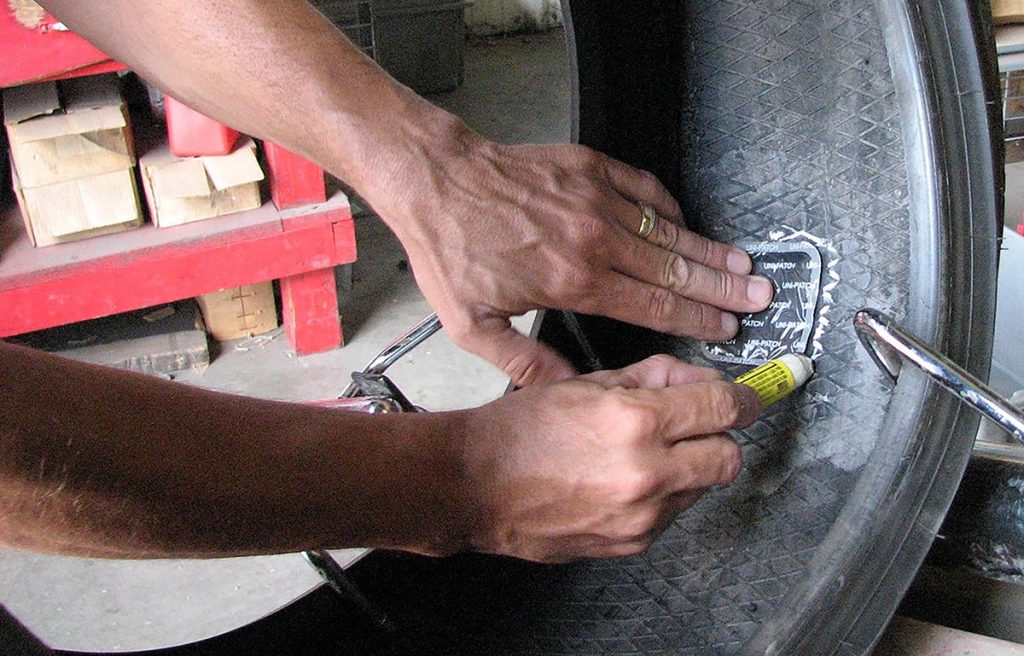
Please note! Since the tread tire is molded, the wheelbarrow can be used on rough surfaces where pneumatic specimens deteriorate quickly.
This material is an alternative to molded and pneumatic options. A polyurethane tire cannot be pierced, just like a cast one. At the same time, the ride and running characteristics are the same as those of pneumatic wheelbarrows. Polyurethane is characterized by high depreciation properties, wear resistance, durability. No additional maintenance is required to maintain performance.
Benefits of polyurethane wheels:

Made of polyurethane foam
Garden strawberry varieties
The main parts of the trolley and their functions: Its main functions are cushioning and keeping the device on the go. If the tube deflates, the constant bending of a hard tread tire will cause it to deteriorate.
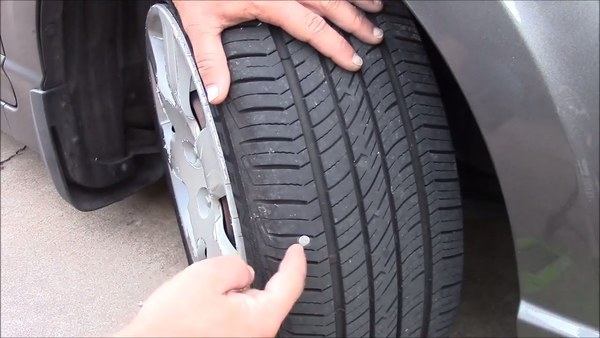 It also helps in cushioning bumps. There are 2 types of bearings - sliding and rolling. It is advisable to choose the first option.
It also helps in cushioning bumps. There are 2 types of bearings - sliding and rolling. It is advisable to choose the first option. Wheel arrangement
Why do garden roses fall leaves
The choice should be determined by the place for use. If you have to use on an area with a lot of stones or debris, you should choose a tire with molded rubber or urethane foam. If the area with a lot of bumps, it is better to choose pneumatic.
Important! The larger the wheel, the easier it is to pull the cart.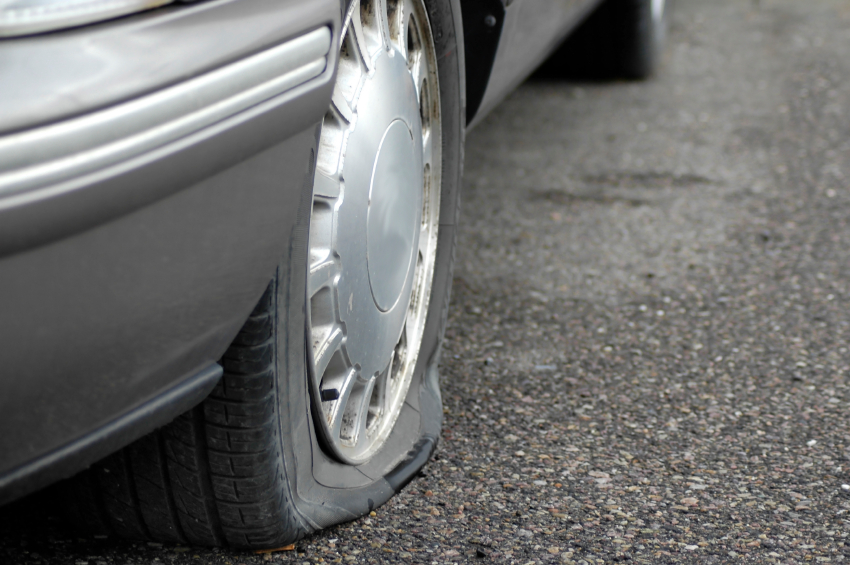
One-wheel garden wheelbarrow
When buying a tire, it is necessary to indicate the marking with the pressure with which it can be inflated. Typically, this value is in the range of 25 to 70 P.S.I. However, it is advisable not to inflate more than half of the maximum pressure of the tire.
Garden cart wheels often go bad. For replacement, the following steps will have to be taken:
How to change the tube on a garden wheelbarrow
The main cause of failure is the presence of a small amount of natural rubber in the composition.